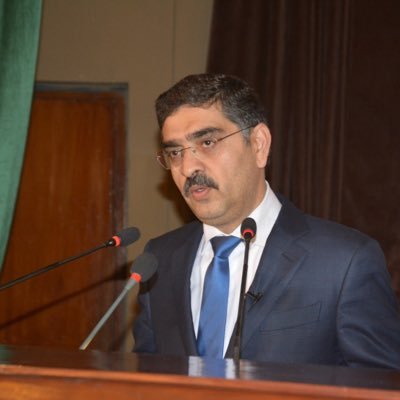Pakistan is aping Sri Lanka in borrowings. With Quadrupling Government Borrowings Pakistan’s Economy Continues to Struggle… writes Sakariya Kareem
With almost half of its population living below the poverty line and policy decisions on resources driven by strong vested interests of the military, Pakistan’s economy is now facing one of its worst crises. Poor policy choices, combined with a series of shocks — Covid 19, the 2022 catastrophic floods and adverse global conditions, caused growth to slow, poverty to increase, and brought the country to the brink of debt default. Its struggling economy can be deconstructed simply by the fact that Pakistan remains a country that consumes far more than it produces and finances its growing deficits with more loans rather than increasing its capacity to produce.
One big piece of evidence of the seriousness of the ongoing fiscal crisis in Pakistan is the fact that the government’s borrowings from commercial banks have quadrupled in the past year. The borrowings continue to mount despite enough tax collection primarily because of the ever-increasing cost of domestic and external debt servicing and large spending on pay and pensions of the government employees amidst no major savings on account of the day-to-day expenses of running the government. Till November 2023, the federal government borrowed more than Pak Rs3.244 trillion from commercial banks. In the comparable period of the last fiscal year, the then federal government’s borrowings from banks totalled just Pak Rs 827 billion or one-fourth of current borrowings.
Fiscal imbalance expanded phenomenally during the last year, and it continues to further expand. The fiscal deficit, or the gap between the government’s income and expenses, has been at the heart of the ongoing external account crisis. According to the State Bank of Pakistan’s statement, by 2023 year-end Pakistan witnessed a large balance of payments deficit of $2.067bn. Containing this deficit is and will remain a big challenge.

There are deep-seated policy challenges in all major sectors. The real estate and agriculture sectors and several industries operating under the umbrella of the powerful establishment are not being taxed to their full potential. Current agricultural subsidies, government procurement and price restrictions lock farmers into low-value, undiversified farming systems and water-intensive crops. In the energy sector, tariff increases have helped limit losses while protecting poor consumers, but large distribution and transmission losses, combined with high generation costs have to be reduced to put the sector on a sustainable footing.A challenging business environment deters investment, as does strong state presence in contested markets. Tax distortions also discourage productive investment and support non-tradable sectors such as real estate. Pakistan’s lower to the middle class has been unequally shouldering the burden of the colossal failure of the tax collector to tax the rich. And even the commercial banks continue to keep investing funds in government debt papers instead of lending to the private sector, whose credit appetite is already low due to the withdrawal of subsidies, high energy prices and very high interest rates. A perennial ignorance and indifference towards the export sector have crippled the country’s ability to finance imports, constantly relying on overseas Pakistanis to support 230m people back home.
According to Najy Benhassine, Country Director for the World Bank in Pakistan, Pakistan was in the middle of a human resource capital and economic crisis. A series of reports on Pakistan, released by Benhassine “Reforms For a Brighter Future: Time to Decide” say that Pakistan had been facing numerous economic hardships including inflation, rising electricity prices, severe climate shocks, and insufficient public resources to finance development and climate adaptation — when the country was among the most vulnerable to climate change impacts. “Policy decisions are heavily influenced by strong vested interests, including those of military, political and business leaders.”[1] More recently, the World Bank country director stressed the urgent need for significant improvements in fiscal management. Najy Benhassine said the costs of servicing Pakistan’s debt and the mobilisation of domestic revenue have reached unsustainable levels.[2]
The country must pay billions in debt repayments over the next three years. Whenever the international community grants Pakistan a project, the balance of payments problem is overcome. A heavy reliance on remittances, fewer exports with low added value, a diminished manufacturing base, political instability, popular political tactics, a colonial institutional framework, and the absence of new projects, the financial crisis is worsening.
The harsh reality in Pakistan is that its policy makers, establishment military, politicians and bureaucracy have been catering to their self-interests, playing to the gallery and are bereft of novel economic ideas. Resultantly, the already squeezed middle class tries to find ways to apply for jobs abroad and migrate. The situation has come to a point where any step taken to stabilise the economy actually exacerbates the crisis. For example, administrative curbs to improve the external account and increased interest rates to address currency devaluation and inflation are threatening to further destabilise the high-deficit budget. The people should brace themselves for more misery as none of the political parties contending for the Feb 8 general elections, has any credible plan to deal with the crisis.

Leave a Reply